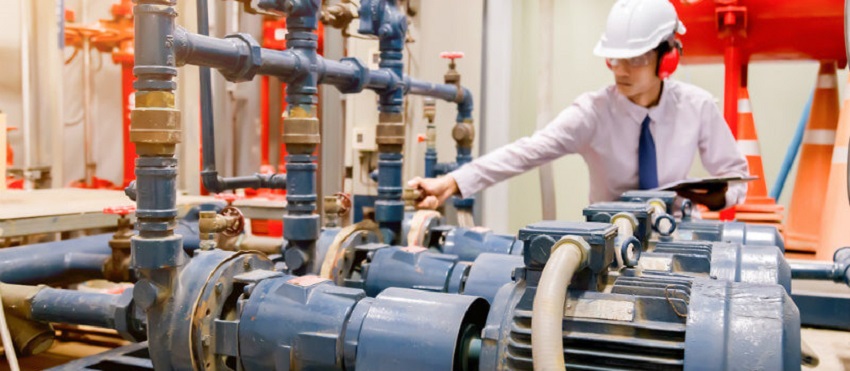
Pumps and Motors Maintenance Tips for New York City Industrial Facilities
Pumps are a critical cog in the wheel of your industrial facility. If they malfunction, it can cause massive disruptions and loss of productivity.
It’s essential to learn the warning signs of a malfunctioning pump and act on them immediately. It will prevent a small problem from turning into a big one.
Regular Inspections
Pumps are the cogs that keep your industrial facility working, so they must be inspected regularly. Otherwise, they could break down, leading to expensive repair bills and a slowdown in productivity.
A basic inspection should include looking for leaks, unusual sounds or vibrations, capacity levels, pressure gauges, and power consumption. A more thorough examination is required for annual inspections, which involve dismantling the pump and checking for worn or damaged parts.
A good maintenance schedule also includes daily visual inspections. These can help detect early warning signs of lubrication problems such as abrasion or corrosion.
Check the Oil Level
Ensuring that hydraulic fluids, cooling fluids, and lubricants remain at manufacturer-recommended levels is essential for industrial pumps New York, NY. This simple step can significantly extend the lifespan of these machines.
In addition to checking the oil level, it’s essential to regularly check for blockages in your lubrication system and signs of contamination in your pump. Adding these inspections to your daily operators’ rounds can help you catch early warning signs before functional failure occurs.
Electrical monitors (such as current transmitters) for each pump and motor can also help reduce repair costs. These sensors can identify vibration trends and alert technicians when it is time for a repair or replacement.
Replace the Seals
A leaky shaft seal is one of the most apparent indicators of a pump problem. If neglected, it can lead to significant water loss and equipment damage.
Start by turning off the power to the pump. Then, disconnect the piping from the pump inlet and outlet. Place the pump on a worktable or other spacious work area. Remove the bolts that hold the casing and slide it off the pump.
When ready to replace the seal, ensure it is the right size. One wrong thump with a hammer can tear the seal or puncture the casing.
Check the Bearings
A bearing that gets extremely hot to the touch is a severe problem that should not be ignored. It indicates metal-to-metal contact and that the lubrication is not doing its job.
It could mean that the lubrication needs to be fixed or that the bearing needs to be the right design for the application. It will result in excess friction, overheating, and premature failure.
It is also possible that the bearings are contaminated with burnt grease. It is caused by electrical arcing, which ruins the lubricating ability of the grease and causes it to become abrasive.
Check the Rotor
There’s often a short window before a pump, mechanical seal, or motor will fail. A failure during a vital process can mean spoiled food, damaged textiles, or lost production.
It’s not always possible to prevent a failed pump from occurring, but you can take steps to reduce the risk of such events by performing a preventative maintenance program. Laser alignment, shaft inspection, and lubrication are the most critical preventative maintenance activities for pumps and motors.
Excessive vibration or loud noises may indicate an impending problem with a centrifugal pump. Shaft seal leaks can also cause vaporous cavitation, reducing efficiency, overheating, and wear.
Check the Connections
As with motors, pumps need the right amount of electricity to function well. Excess power can cause a mechanical failure or damage the electrical controls overseeing pump operations and processes.
Replacing a pump can be a time-consuming and expensive task. It can also cause significant unplanned downtime and lost productivity.
The problem is often not the pump itself but the connections to it. To prevent this, check the electrical splice connections regularly and examine them for corrosion and apparent signs of wear and tear.
Check the Electrical Connections
Having spare equipment in stock for your pumps and motors that are not working correctly is a good idea. However, keeping your equipment on the shelf for a short time can lead to damage and shorten its lifespan.
For example, storing the spare pump on the floor next to a paper machine can cause vibrations that can damage the pump’s internal components. Store equipment on a pallet or in another suitable enclosure to minimize vibrations.
Check all electrical splice connections and look for corrosion or other obvious signs of problems, such as burned or melted parts. Check the control panel connections and watertightness. If the pump uses a float to detect sewage levels, readjust or replace it if necessary.